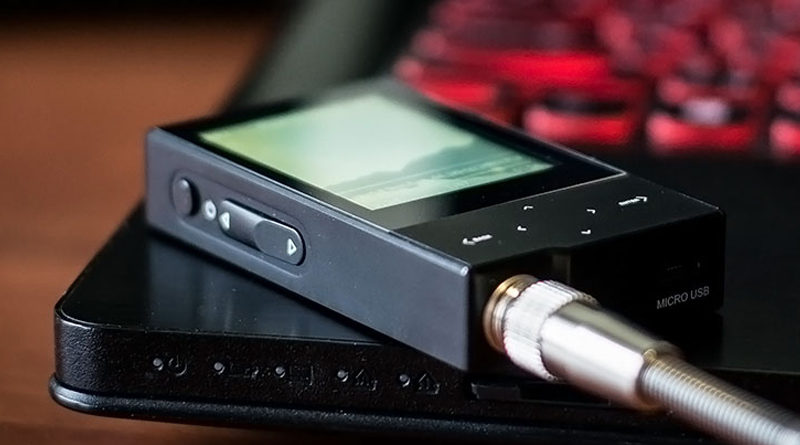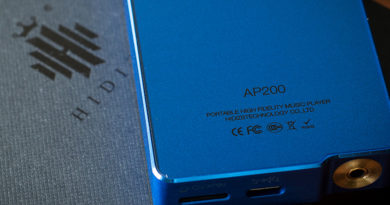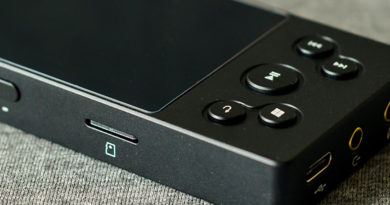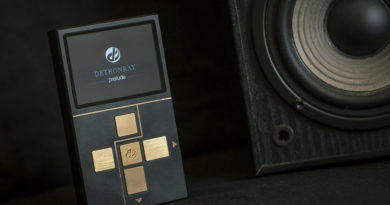Hidizs AP60II — youngest in HiRes family but worth every cent
10% discount for any item at Hidizs store using our promocode: ZMCR10

Hidizs AP100 — one of the best market deals presented a couple of years ago and still holding the leading position in class of portable HiRes players/DACs. The thing we’ve started this blog site with.
10% discount for any item at Hidizs store using our promocode: ZMCR10

Followed by the new flagship Hidizs AP200 couple of years later — Android OS based player equipped with 2 separate ES9118C DACs (1 per channel) and many additional modern features resulting in a very good price/performance ratio.

And now — the youngest model in Hidizs family of Hi-Fi portable devices — AP60II. The youngest means the time of release and dimensions but not the performance, features or audio quality degradation. We’ve got a chance to test it and want to share our impressions about this new little masterpiece from Hidizs.

Technical specifications to get rid of the boring stuff:

In the box, first look and impressions:
The box is very traditional for Hidizs. High quality prints, large shiny logo at front and full technical specifications at the back. Such box would be very pleasing to receive as a present on any occasion.
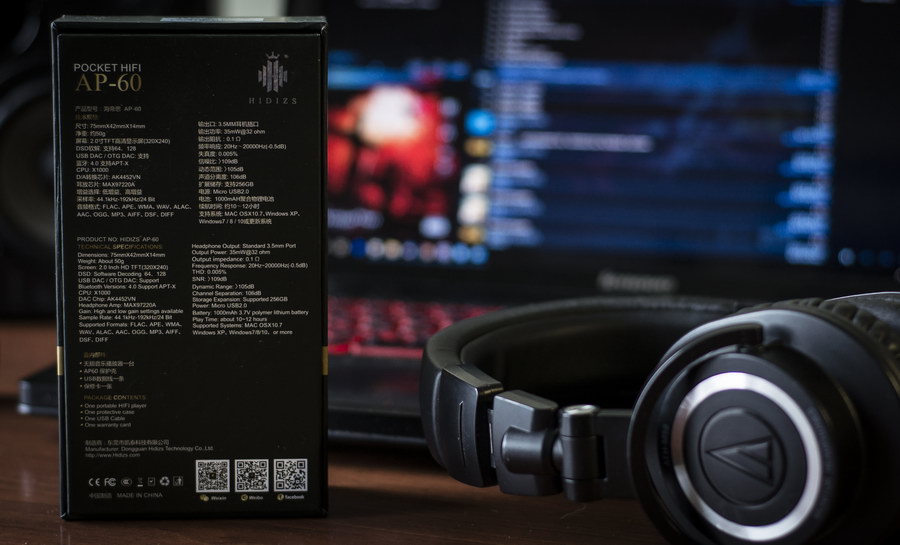
We really didn’t realize how small AP60II player is comparing to other Hidizs models until we’ve opened the box. First couple of seconds we failed to identify the unit itself inside the box due to its unusual size and additional protective semi-transparent bag. Only than came the understanding that upper part of such a large box holds AP60II securely at place and the bottom part contains additional packing for other goodies.
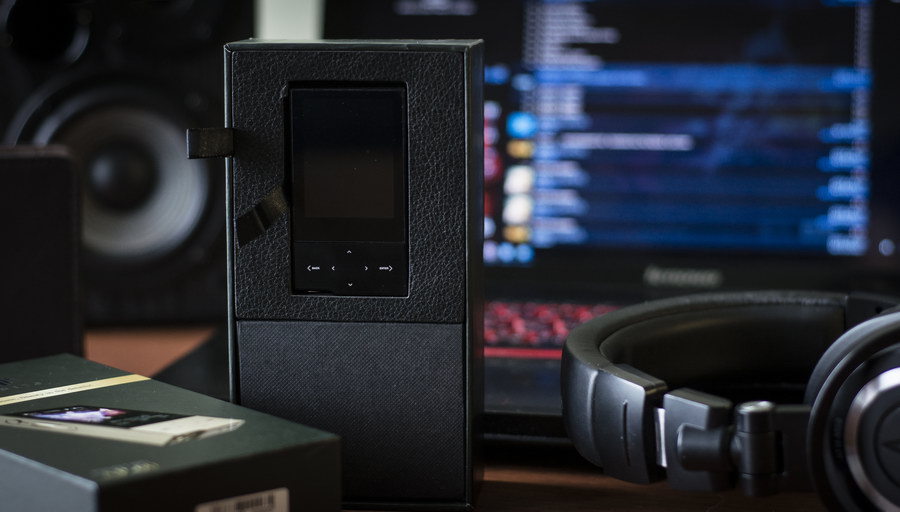
Beside the player itself, the box contents are:
- Semi-transparent matt plastic protective cover (clamp-shell type)
- Extra screen protector
- Back glass protector
- microUSB cable
- Warranty materials and quick start guide

Unfortunately, no microSD card or charger accessories provided. But hey — current market price for this unit is so low and price/features/performance ratio is so high that it is obvious that manufacturer tried to compensate some cost… Anyway, AP60II can charge from any USB port or standalone charger. No big deal. And microSD cards are cheap nowadays, especially if not trying to feed something like UHS-type inside which is useless — any microSD card up to 256GB and almost of any class would do. Even large DSD files would still require only class 4-6 to play smoothly.
What is really good is that manufacturer included protective plastic clamp shell that covers back and sides of AP60II, applied protective screen cover (you would only have to peel off opper layer prior to use), one extra screen protector and additional back glass protector. The last one is not really necessary when the device is used with clamp shell.
Materials and design:
In terms of design and materials AP60II is almost the exact copy of AP200 flagship unit. Same aluminum-alloy unibody construction with 2.5D curved glass panel at the back. Feels rock solid in hands.

BTW — previous incarnation of AP60 (yes, there was one on the market for a short period of time) was made of plastic.
It doesn’t feature different material back panels (wood, glass, stainless-steel) as its older brother but does come in different colors: black, silver, grey, blue and gold. We have black version here. It is perfectly crafted, gaps between elements are hardly visible, no free play of buttons on the left side.

Most of the space at front is used by 2.0inch screen. No touch function.
In overall, we like the design of AP60II very much. It is very well put together. Good combination and choice of durable materials that also provide such pleasing feel of holding and using this unit.
Screen and control elements:
What really differentiates this player from AP200 and early AP60 is the type of buttons used to control UI — all control buttons are mechanical now instead of utilizing touch screen (AP200) or touch sensors (early AP60). Our opinion — this is 100% a good decision. We love AP100 for its ease of blind operation with dedicated mechanical buttons and AP60II should not let us down in this aspect.

Control elements such as volume up/down buttons and power/screen on/off switch are located on the left side. Exit/menu, up/ff, down/rew and play/pause buttons are located below the screen.

MicroUSB port for charging and USB DAC, OTG function together with 3.5mm headphones jack are located at the bottom. MicroSD card slot is on the right side. Top side left totally blank.
2.0inch screen is big enough considering overall unit dimensions, utilizes 320×240 resolution and has adequate viewing angles. Colors are bit muted due to lack of contrast and depth of blacks… Definitely not the best on the market but not the worst either. Totally enough for this kind if device and convenient operations. And a step ahead comparing to early AP60 samples.

Features and capabilities:
First of all — we would be comparing AP60II to its family members AP100 and AP200 in this section. We got used to AP100 for couple of years and were impressed with AP200 new capabilities. Therefore, we want to clarify which functions are inherited by AP60II from its relatives and which are not.

Despite of being old, AP100 is still a very good choice due to the following features:
- All-mechanical controls
- Can act as USB DAC
- 2 separate oscillators to eliminate jitter
- HW EQ dedicated chip
- Has line out and headphones outputs
- Has coaxial In/Out ports
- Has convenient and stable proprietary FW
- Has dedicated SRC and EQ buttons
- Has built in 8GB storage and accepts microSD cards
To mention weak sides:
- Only capable of DSD64 2.6MHz stereo
When AP200 finally hit the market it introduced some new features:
- Based on Android OS with Google Play Store
- Hiby APP music player in pure music mode
- 2 separate DACs for left and right channel
- HW DSD decoder — DSD64, 128
- Touch screen operation
- 8, 16, 32, 64GB of storage and microSD cards
- Wi-Fi, Bluetooth with AptX support
But is also lost some valuable points: touch screen operation is not so convenient, Android OS is kind of heavy for HiRes player, no dedicated line out, EQ, SRC buttons, no extra coaxial inputs and outputs. But definitely, it is a minor and positive upgrade to AP100 in terms of new features and audio quality.
We would put it this way — the best device we can think of would be a mixture of AP100 physical controls, stable proprietary FW, additional control buttons and ports with AP200 new audio formats support and more capable audio HW.

So, going back to AP60II — where does it belong in Hidizs lineup?
PROS:
- It has mechanical controls like in AP100
- It has external USB DAC function
- USB DAC function doesn’t require additional drivers for PC (AP100 and AP200 have special drivers)
- It also has OTG DAC function absent in AP100 and not really present in AP200 FW yet
- It is based on convenient lightweight proprietary FW like AP100
- It has DSD64, 128 support like AP200, up to 11.2MHz
- It has Bluetooth with AptX support as in AP200
- Up to 32bits/384KHz in USB DAC mode
CONS:
- Less advanced among all in terms of audio HW (not much information about EQ chip, oscillators)
- Doesn’t have inbuilt storage
As an outcome — we see that it is partially matching our proposed mixture of other two players in a strive to get an ideal device. The only thing what worries us the most — is it a match to any other one in terms of audio quality? Let’s move one and find out!
Audio features and quality:
Our disclaimer: we are not the type of people who would try to prove others that the device X is better than device Y just because the specifications written on the paper is better. We understand that more advanced audio HW might/should result in better quality… But we mostly trust our own ears and question ourselves — is the difference so obvious or it is hardly noticeable or even subjectively absent?… Here is where the different hearing abilities of different people play a great role. Yes, we have trained ears, at least to some extent. Playing guitars as a hobby, listening to different music for many hours, using only good equipment to hear the details. But we are not experts either. Let’s say — an advanced user. Therefore, our opinion can be taken into consideration and trusted to only some extent as well.

If to focus on the boring stuff — specifications — the only information that is available is that AP60II utilizes Asahi Kasei AK4452VN D/A converter together with MAX97220A amplifier. This D/A converter is capable of 32bit/384KHz, eats many different audio formats and we also get DSD64, 128 (D/A is actually capable of DSD256) in DSD Over PCM mode. Same D/A chip which is a member of Asahi Kasei Velvet Sound architecture family — is a premium D/A converter and can be found in lots of other much more expensive Hi-Fi audio devices like Astell&Kern, Onkyo, Teak, etc. Asahi Kasei D/A converters, despite the fact that is not so widely used in other portable players, made its success due to the low-distortion technology that achieves industry’s best performance of -107dB as a DAC with 115dB S/N characteristic and OSRD (Over Sampling Ratio Doubler) technology that greatly reduces out of band noise. These are not just words on their website — there are many sound experts who claim that AK Velvet sound converters made a revolution when compared to other chips with delta-sigma modulation. One of their statements is that AK 43xx series and up actually performs as if there are 2 DACs per channel.

MAX9722A amplifier is a good supplement to such DAC choice — it is also very capable chip which is used in many different devices like SMSL amplifiers and players, etc. Its own characteristics don’t limit D/A chip potential.
- Output Power 125mW into 32Ω with a 5V Supply
- 3VRMS Output Drive into 1kΩ with a 5V Supply
- 2VRMS Output Drive into 600Ω with a 3.3V Supply
- Fully Differential Inputs
- Fixed or Externally Adjustable Gain with No Clicks or Pops
- Wide 2.5V to 5.5V Operating Range
- DirectDrive Outputs Eliminate DC-Blocking Capacitors
- Flat THD+N, Better Than 90dB in the Audio Band
- SNR: 112dB
Apparently, despite small amount of information listed in the technical specifications of AP60II and that text doesn’t look so impressive as in AP200 — the real world investigation about utilized HW tells us that AP60II is almost even if not better than AP200 in this aspect. Personally, we don’t think that it is better due to its dimensions which are much smaller consequently resulting in less advanced supplementary HW architecture but we can assume that its sound quality would be on par and no obvious difference would show up. Moving on to audio test — the final bay for our hopes…

Our standart testing equipment is Audio-Technica ATH-M50 professional monitor headphones and Edifier R1100 speakers. Material: Dire Straits, Pink Floyd, Manowar and lots of sound files consisting mostly of flac and dsd files. Again, we would compare to AP100 and AP200 units.
As we have expected — we can hardly hear any difference in the audio quality of all 3 players. And if in case of AP100 VS AP200 battle there was a more obvious change in better midbass and high octave control in favor of the latter, battle between AP60II and AP200 didn’t show that much change. Yes, AP60II obviously has lower driving ability but still capable of maxing out acceptable volume of 38Ohm M50. Bass and midbass stay in a good control, no «hisses» or other distorted sounds on highs, maybe just a fraction less details there. Mids stand out a bit more than we got used to but not distracting from the rest of the scene. One concern is that scene width and depth is a bit smaller if to compare to AP200 performance which becomes apparent only in some music compositions that were recorded in a way to reproduce such depth.

What we really liked about AP60II is that it has much lower audio play lag when used as USB DAC for Windows 10 PC. AP200 showed ~1 second of lag whereas AP60II shows something like 1/3 of a second. Plenty of room to optimize this aspect in both units, though.
- if you like AP100 amount of ports and DSD support is not your concern and you have >100 Ohm load — it’s your choice.
- if you want maximum possibilities from Android OS + maximum scene depth and you have >100 Ohm — choose AP200.
- if you need something very portable, with physical buttons or as a OTG transport or want to use it stand alone with <100 Ohm load — AP60II is here.
FW and operation:
As we’ve already mentioned and what we really like is the fact that AP60II is based on proprietary and lightweight firmware (current version 1.11beta). Don’t get us wrong — we like the possibilities of universal OS like Android but we really think that it is a bit too much for a portable music player. Our first and almost the only intent when taking HiRes player with us is to listen to high quality audio…, all other capabilities of universal FW are left aside for 99,9% of a time and only consuming power. That is why we prefer the approach of AP100 and AP60II.

If to describe AP60II — it is very logical and easy to operate. Power on time is ~12 seconds.
There are 4 main operating sections:
- MENU which consists of:
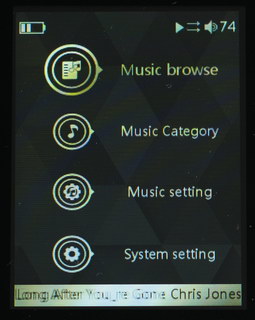
Music browse — browsing though music based on drives and folders
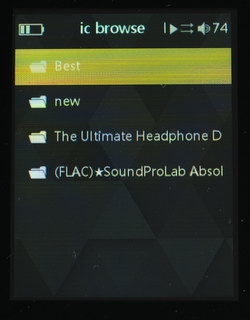
Music category — browsing music through categories and playlists

Music settings:
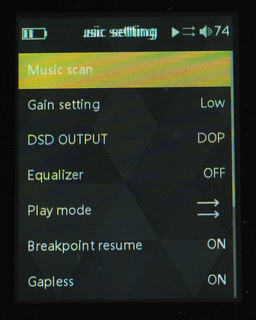
- gain
- scan
- dsd control
- equalizer
- play mode
- breakpoint
- gapless play
- max volume
- startup volume
- balance
System Settings:

- language
- bluetooth
- USB mode
- brightness
- backlight time
- clock
- folder skip
- volume key mode
- power saving timer
- format card
- reset
- system update
- about
2. Playing now — cover photo with file name and audio source information

3. Screen lock — time, playing now, current volume and battery information

4. Options screen — quick functions like gain, play modes, song playlist features and delete files.

note: those images are not screenshot files. Captured with camera. Looks awfull due to camera moire and high resolution.
That’s it. Power button is used to switch the device on and off and to wake the screen. Volume buttons used to control volume or/and to switch tracks (if stated so in system settings). Other buttons behave as menu navigation back, up, down, enter or as music play control — next/ff, previous/rew.
If USB mode in system settings is set to USB — AP60II would be recognized as mass storage device when connected to PC (it would also take charge). If DAC mode is selected — it would be recognized as USB DAC in Windows 10 (don’t have OSX to test, should be the same). It would also take charge in DAC mode.
Firmware upgrade is easy: whenever there is a new FW — take update.upt file and place it on microSD card. Go to System Settings -> System update -> OK. Wait until done. Don’t forget that the device should have at least 50% of charge prior to updating.
Conclusion:
In overall, sound quality is on par with other Hidizs lineup members. Despite significantly smaller size and cost, this little device is capable of very good sound quality and utilizes some best and convenient features from other two Hidizs family members. Easy to control, pleasing to hold and operate, exciting to listen to — rare combination of good characteristic that make AP60II a must have device.
10% discount for any item at Hidizs store using our promocode: ZMCR10


